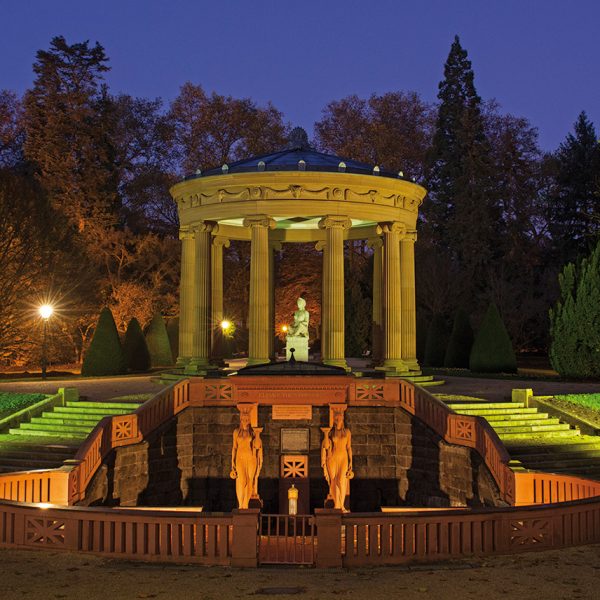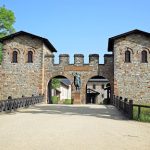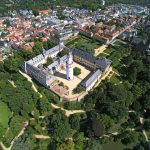There are no menu items in this menu.
Bad Homburg







See what Germany has to offer
With 200 years of healthcare tradition, Bad Homburg ranks among the most reputed spa centers in Europe, renowned for the quality of its treatments but also for its well-conserved urban heritage and landscape: an outstanding example of a classic German spa town.
Category
Ancient Spa
Price Range
60-200 €
Your Thermal Travelsexperience
Once enjoyed by the Romans, Bad Homburg’s famous mineral springs were used to produce salt in early times, but soon they were devoted to the health of the town’s prestigious visitors and residents: European nobility, literary figures, politicians, high-rank militars…. At the end of the 19th century Bad Homburg was a popular resort for this cosmopolitan high society, a magnificent spa town full of parklands and enterntainment facilities.
Destination
Louisenstraße 58
Weather
-> Check the forecast
In São Pedro do Sul, the former Grande Hotel Lisboa was transformed into the Grande Hotel Thermas. Exotic inspirations and glamour are common themes throughout the project, which offers 153 rooms and aims to give thermalism a more contemporary and even avant-garde approach.
Sic Notícias
RelatedDestinations



Historical Background
12th - 17th Century
Early History
Bad Homburg’s history began with the construction of a castle in 1170 at the base of the Taunus mountains. The village that developed around the castle received its town charter in 1330, and prosperity followed when the Landgraviate of Hessen-Homburg was established in 1622.
1680s
Cultural and Architectural Growth
In 1680, Landgrave Friedrich II transformed the old castle into a baroque palace and established the new town. His successors continued fostering Bad Homburg’s cultural significance, attracting notable figures like Goethe and Hölderlin.
1809 - 19th Century
Becoming a Spa Town
The discovery of the first mineral spring in 1809 marked the town's emergence as a spa destination. The Elisabethenquelle was praised for its healing properties in 1834, and in 1841, François and Louis Blanc developed the first spa facilities and opened the Casino. The creation of the spa park and connection to the European railway network further boosted its popularity.
Late 19th Century
Royal Recognition
By the late 19th century, Kaiser Wilhelm II made Bad Homburg his summer residence, solidifying its status as a fashionable resort. European aristocrats flocked to enjoy the thermal waters, the first tennis courts on the continent (established in 1876), and Germany’s first golf course (opened in 1889).
Modern-Day
Modern Legacy
Though the town’s golden era as an “aristocrat amongst Europe’s spa resorts” ended with the First World War, Bad Homburg remains a celebrated spa destination to this day.
The then Prince of Wales, who was later to become King Edward VII of England, visited Bad Homburg a total of 32 times. On a side note, it was he who popularised the famous “Homburg hat”.
Where can you enjoy thisThermal Sites?










Find out More About thisThermal Sites

Springs
Elisabethenbrunned, Landgrafen- und Auguste-Victoria-Brunnen, Louisenbrunnen, Stahlbrunnen, Kaiserbrunnen, Ludwigsbrunnen, Solesprudel, Viktoria-Louise-Brunnen

Earliest known use
Roman Times

Hottest Spring
34,5ºC

Chemical Elements
Sodium Chloride
Culture&Gastronomy
Afyon:Culture, Thermal, and Cuisine
Afyon is renowned for its thermal springs, rich culture, and cuisine. These elements, harmonized with religious history, are showcased through various cultural assets and activities. Beyond its healing springs, Afyon offers concerts, festivals, sports, and historic monuments.
HistoricalSites
Ruins from the Roman Empire include Apemia, Synnada, and Amorion. The Byzantines and Seljuks added landmarks like Kırkgöz Bridge and Sahipata Caravanserai. The Ottomans constructed notable baths and caravanserais, such as İmaret Bath and Döğer Caravanserai.
UNESCORecognition
Afyon is home to two UNESCO World Heritage Tentative List sites: Mountainous Phrygia and Afyon Great Mosque. In 2019, the city was designated a UNESCO Creative City for its world-renowned cuisine.
